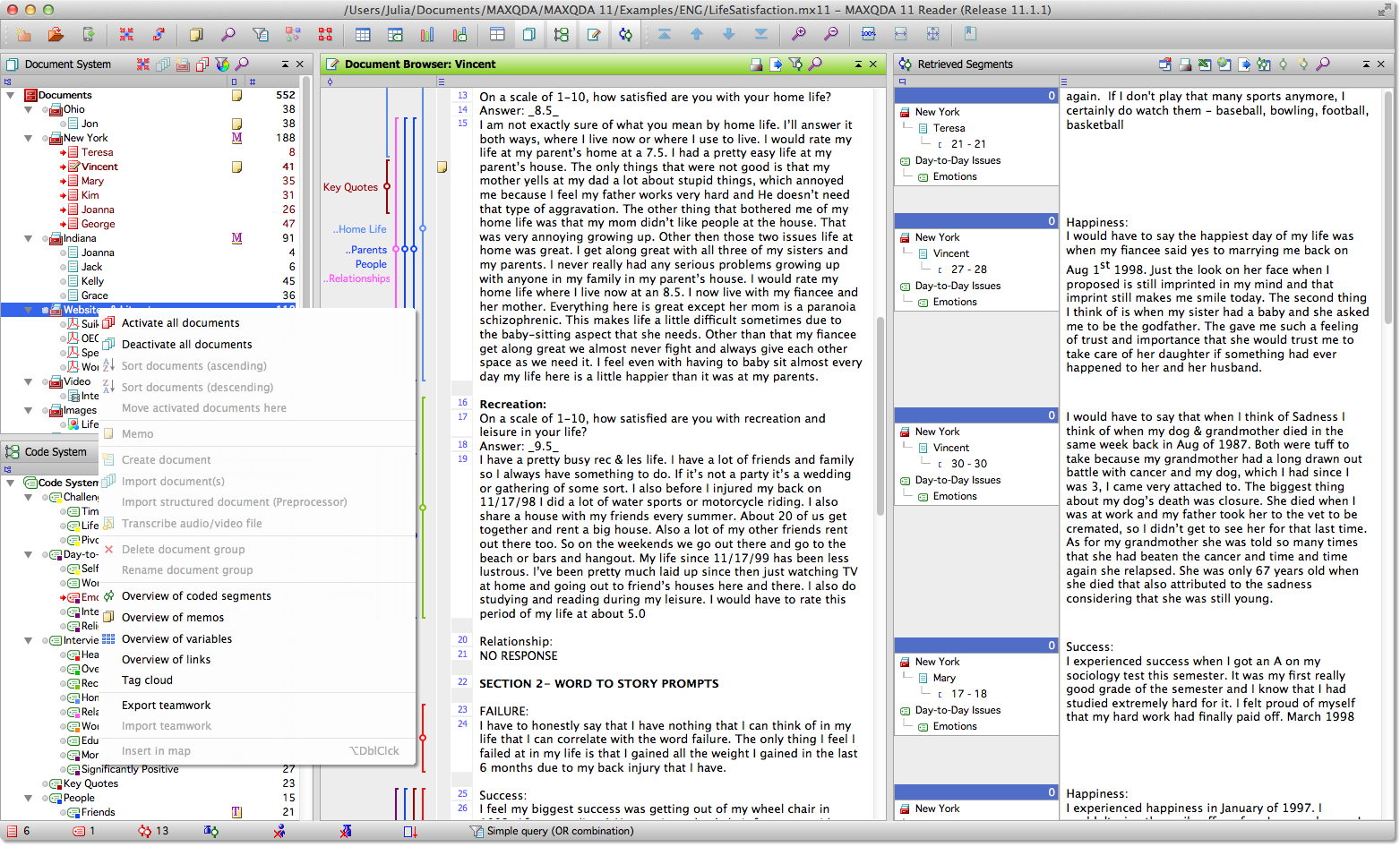

In general the only data that should not be treated as a variable will be the responses to open-ended questions, ie questions 2, 3A, 4A and 5, so these should be the only header labels that do not need the addition of the $ symbol. Thus the text in cell C1 should be changed from “EMP STAT” TO “$EMP STAT”. The third step is to identify the columns of data that will be treated as variables in MAXQDA and edit their heading labels in row 1 by inserting the “$” symbol at the beginning of each string. The identifiers down this column are in a valid format so do not need to be edited, but it may be worth checking to make sure that there are no accidental duplications in the list.

The second step is to rename column B from “RESPONDENT” to “DOCUMENT NAME” by editing the text in cell B1. In cell A2 enter the words “Survey Data” and copy this into every row down column A to the bottom of the dataset at row 192. In cell A1 enter the text “DOCUMENT GROUP”. The first step as above, is to insert a new column at the extreme left of the spreadsheet so that it becomes column A. This has been done already in this example, in the file “Downturn survey – increased sample July 2012.xlsx” and this will be the starting point for this sectionįigure 4.4.2 – Survey Data spreadsheet prepared for import to MAXQDA11 It is essential that the data is set up in a spreadsheet, such as MS Excel, with a single row for each case or respondent, and with the variables and question responses in columns. MAXQDA has a straightforward procedure for importing the data collected in a survey into a project, but a small amount of data preparation is necessary to make this work. After this has been done there will still be some other errors in these documents but it may be more instructive to find and correct them by using the tools in MAXQDA11. So, it is recommended that all of the focus group transcripts are checked for missing hard returns between speakers and re-saved to store all editing corrections before importing them into your data analysis project. Note also how near the top of page 2, where the moderator asks “anyone else?” there is only a soft return before the response of R.53 starts – this displays adequately in MS Word but both speeches will be included in the same paragraph for autocoding purposes in MAXQDA11.įigure 4.4.1 – Checking paragraph markers in MS Word Note how the lines near the top, with data about each participant, have soft returns to separate them – these should be replaced with hard returns. To see an example, open the Group2 transcript in MS Word and switch on the show/hide tool. It will be important that there is at least one hard return between each separate speaker in the transcript, whereas in the sample data there are some inconsistencies in this respect. When the focus group transcripts are imported into MAXQDA11 the layout will be retained but the hard and soft returns will be recognised differently. However it may be helpful to check and correct paragraph markers first, as these are significant in the process of coding focus group speakers.Īs shown in Figure 4.4.1, in MS Word the “Show/Hide” button on the Home ribbon can be used to switch on the display of formatting characters so that the paragraph markers may be checked. It can take pictures, text, audio and video, allows for some coding and then upload to MAXQDA.There is no necessity to carry out any substantial pre-editing of the transcripts before importing them into MAXQDA11 because the program has an editing function which can be used to correct minor errors later.
#Maxqda software free

Structured data mining, Text mining, Image mining, Audio mining, Video mining, Social network analysisĭata extraction, Data transformation, Data analysis, Data visualisation, Data conversion, Data cleaning It is the successor of winMAX, which was first made available in 1989.”
#Maxqda software software
MAXQDAplus contains the quantiative MAXDictio tool.Īccording to Wikipedia (oct 2013), “MAXQDA is a software program designed for computer-assisted qualitative and mixed methods data, text and multimedia analysis in academic, scientific, and business institutions.

the ones that can be found in Atlas or Nvivo) + data management/import tools


 0 kommentar(er)
0 kommentar(er)
